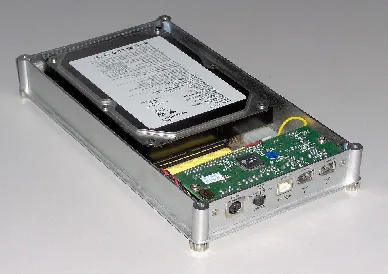Mounting an External Hard Drive in Linux
After a machine restart, the external hard drive wasn’t recognized and needed to be remounted. However, after using fdisk -l, the external hard drive was nowhere to be found, making it impossible to mount.

How to Mount a Disk
First, use fdisk -l to check the current hard drive status.
➜ ~ fdisk -l
WARNING: fdisk GPT support is currently new, and therefore in an experimental phase. Use at your own discretion.
Disk /dev/sdb: 320.1 GB, 320072933376 bytes, 625142448 sectors
Units = sectors of 1 * 512 = 512 bytes
Sector size (logical/physical): 512 bytes / 512 bytes
I/O size (minimum/optimal): 512 bytes / 512 bytes
Disk label type: gpt
Disk identifier: AF1B577B-830C-4026-AC5F-37870D362B3C
# Start End Size Type Name
1 2048 411647 200M EFI System EFI System Partition
2 411648 2508799 1G Microsoft basic
3 2508800 625141759 296.9G Linux LVM
Disk /dev/mapper/centos-root: 53.7 GB, 53687091200 bytes, 104857600 sectors
Units = sectors of 1 * 512 = 512 bytes
Sector size (logical/physical): 512 bytes / 512 bytes
I/O size (minimum/optimal): 512 bytes / 512 bytes
Disk /dev/mapper/centos-swap: 3623 MB, 3623878656 bytes, 7077888 sectors
Units = sectors of 1 * 512 = 512 bytes
Sector size (logical/physical): 512 bytes / 512 bytes
I/O size (minimum/optimal): 512 bytes / 512 bytes
Disk /dev/mapper/centos-home: 261.5 GB, 261468717056 bytes, 510681088 sectors
Units = sectors of 1 * 512 = 512 bytes
Sector size (logical/physical): 512 bytes / 512 bytes
I/O size (minimum/optimal): 512 bytes / 512 bytes
Disk /dev/sda: 1000.2 GB, 1000170586112 bytes, 1953458176 sectors
Units = sectors of 1 * 512 = 512 bytes
Sector size (logical/physical): 512 bytes / 512 bytes
I/O size (minimum/optimal): 512 bytes / 512 bytes
Disk label type: dos
Disk identifier: 0x16f2a91f
Device Boot Start End Blocks Id System
/dev/sda1 1 4294967295 2147483647+ ee GPT
Here, my external hard drive is 1TB, which means it’s /dev/sda1. So, I can use the mount command to mount it:
➜ ~ mkdir 60Gug
➜ ~ mount /dev/sda1 ~/60Gaug
➜ ~ ll 60Gaug
total 712M
drwxrwxrwx 1 root root 0 Aug 29 09:35 169306313
-rwxrwxrwx 1 root root 481M Sep 28 12:24 backup.zip
drwxrwxrwx 1 root root 0 Sep 21 18:48 djan
-rwxrwxrwx 1 root root 375K Oct 29 08:42 download
drwxrwxrwx 1 root root 4.0K Oct 31 18:19 genome
drwxrwxrwx 1 root root 4.0K Aug 31 08:55 a
drwxrwxrwx 1 root root 8.0K Oct 8 18:33 jiali
drwxrwxrwx 1 root root 4.0K Sep 21 13:42
drwxrwxrwx 1 root root 0 Sep 21 13:31 N1800068
drwxrwxrwx 1 root root 4.0K Sep 10 15:47 1
-rwxrwxrwx 1 root root 231M Sep 28 12:31 2.zip
drwxrwxrwx 1 root root 4.0K Nov 27 14:04 3
If the Hard Drive Is Not Recognized
1. Check the Host Bus Number
Use the command:
➜ ~ ls /sys/class/scsi_host/
host2 host3 host4 host8
2. Rescan the SCSI Bus to Add Devices
➜ ~ echo "- - -" > /sys/class/scsi_host/host2/scan
➜ ~ echo "- - -" > /sys/class/scsi_host/host3/scan
➜ ~ echo "- - -" > /sys/class/scsi_host/host4/scan
➜ ~ echo "- - -" > /sys/class/scsi_host/host8/scan
Note: Use the corresponding host numbers.
After rescanning, if the device appears when you run fdisk -l again, you can use the mounting command from the previous section.
- 原文作者:春江暮客
- 原文链接:https://www.bobobk.com/en/211.html
- 版权声明:本作品采用知识共享署名-非商业性使用-禁止演绎 4.0 国际许可协议进行许可,非商业转载请注明出处(作者,原文链接),商业转载请联系作者获得授权。